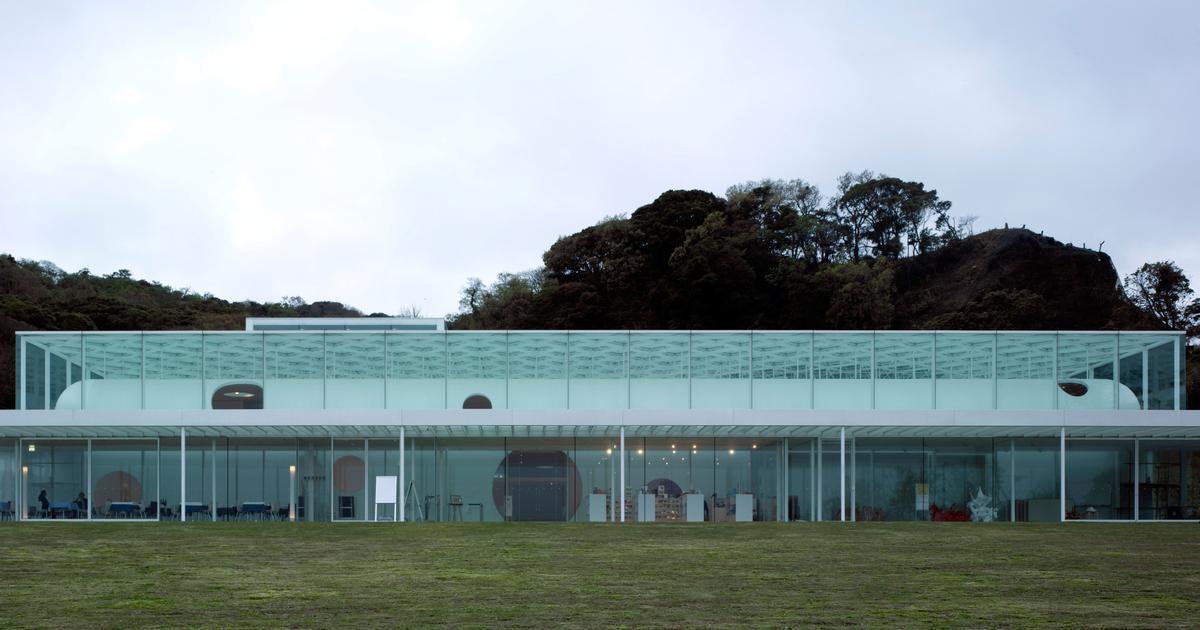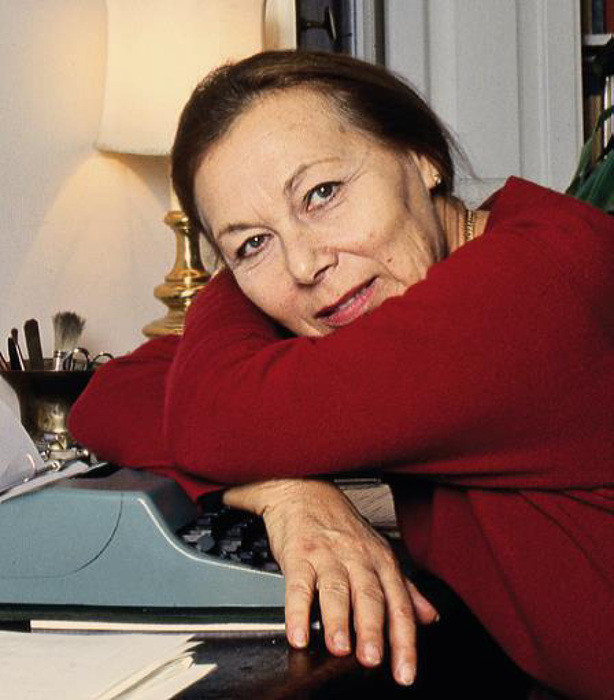If we have learned anything from being immersed in a constant electoral campaign, it is that politics permeates everything: there is nothing that escapes the partisan soflamas that the candidates repeat like parrots. It matters little that there are certain issues of universal concern for which a healthy democratic society should row in the same direction. We have chosen conflict. It's all debate. Everything is ideology. "It's all politics," Thomas Mann said.
What about architecture? Is it politics? Do you have an ideology? Buildings are governed by their own disciplinary laws – construction, function and beauty, although this debate is complicated – not by ideological strategies; They do not establish fiscal frameworks for wealth redistribution, enact laws to combat climate change, or declare war on a neighboring country. It is our rulers who make those decisions. Although it may seem that architecture is at the service of a certain political regime, this does not turn buildings into necessarily politicized objects.
"Your capitalist attitude towards women has no place in communism": when the Cold War was fought in a kitchen
For example, the classical architecture of Ancient Greece has served as a model both for buildings aspiring to represent popular sovereignty (the Capitol in Washington, the Palace of Congress in Madrid or the Bourbon Palace in Paris, seat of the National Assembly of France), and for the delirious project that Adolf Hitler and Albert Speer devised for the renovation of Berlin.
Something similar happens with the brutalist architecture of the 1960s and 1970s. In the United States it is common to find it in federal buildings, while on the other side of the old Iron Curtain it unfolds in a mind-boggling legacy of monuments and public buildings designed to glorify Soviet tutelage. In the United Kingdom, brutalism found a way of expression in large social housing complexes; in Spain, however, this architecture was chosen by lucky families who could afford a home in the Torres Blancas, by Francisco Javier Sáenz de Oíza, or a pisazo overlooking the Retiro in the Torre de Valencia, by Javier Carvajal.
The brutalist apartment complex in Hillingdon, London, built between 1968-1975.Heritage Images (Getty Images)
Who, then, do classical pediments, domes, friezes and columns serve? Democrats or Nazis? And brutalist concrete? Capitalism or communism? Poor or rich? All these examples seem to lead us to the same answer: none.
However, the fact that a building cannot be attributed an ideological meaning does not mean that the act of designing it does not obey a professional ethic that, in some ways, is quite similar to the way in which governments administer public affairs. Frank Lloyd Wright ran his studio as a cult of worship to his person and with a regime of work in semi-slavery that allowed him to carry out some of the greatest creations of twentieth-century architecture. Without that sinister model, neither the Waterfall House nor the Guggenheim Museum in New York would exist. Of course, Wright was not the only one, and in the XXI century, this practice is still in force. The architects and professors José María Echarte and David García-Asenjo have reflected on how the dynamics of teachers and disciples feed job insecurity in architecture studios. The denunciation of students and young architects is recurrent: draconian schedules, meager salaries, sine die scholarship holders and disguises of false freelancers.
From the first sketches to the last detail, through the choice of materials or the management of a work, the process of designing architecture requires many decisions with an unquestionable political and social impact. The stadiums in which the Qatar 2022 World Cup was played were endorsed by some of the most prestigious architecture studios in the world, such as Zaha Hadid Architects or Foster + Partners, who contributed to the tournament with spectacular designs that reinterpreted the Qatari tradition in an avant-garde key. No one knows exactly how many migrant workers died during its construction – the emirate came to recognize 400, while The Guardian raised the figure to 6,500 – but on this side of the world the condemnation was unanimous: making architecture in these conditions is intolerable. The debate over whether a building can be good even if it serves evil purposes and whether architects should atone for the sins of their clients is an open one.
Interior of the Khalifa International Stadium in Qatar during a 2022 World Cup match. Antonio Lacerda (EFE)
Of course, there are also a large number of studios and associations that understand architecture as a "weapon loaded with the future" – as Gabriel Celaya would say – and exercise the profession from a conscious and positive militancy. Sometimes, they even win the battle. When in 2022 Francis Kéré was awarded the prestigious Pritzker Prize, many did not understand that the considered Nobel Prize for architecture fell on an architect whose work was mainly nourished by discreet community buildings of earth built in a village in his native Burkina Faso. Certainly, its architecture is not as spectacular as that of the select club of the international star system to which Frank Gehry, Rem Koolhaas, Jean Nouvel or Herzog & de Meuron belong. But Kéré is an example of the opposite. Its commitment to the climate and landscape of the place, to material tradition and production costs, to the society to which its buildings are destined and to the workers who build them, is genuinely revolutionary. His way of doing architecture is a political act.
Let's look back at Spain. Just look at any media: architecture and urbanism have burst into the current political debate like an elephant in a china shop. Recently we witnessed astonished how the proposal to redesign our cities following the conceptual path of what Carlos Moreno has baptized as the city of the 15 minutes was received with hostility by an important part of the population that, in electoral period, is especially irritable. The promotion of measures aimed at allowing citizens to develop their daily personal, work and leisure routine without the need for public transport or their own vehicle, was interpreted as an attack on individual rights and freedoms. Against all odds, the recovery of the life of the traditional neighborhoods had been transformed into a totalitarian solution that would make the very Big Brother of 1984 pale.
Works of the Superilla in Barcelona during the spring of 2023.Carles Ribas
The same applies to proposals for the renaturalisation of cities. "The boom in research on the benefits of nature suggests that urban green spaces should not be considered an optional luxury. It is a fundamental part of the healthy human habitat and, therefore, daily exposure is essential," says Charles Montgomery in Happy City (Captain Swing, 2023), a stimulating essay on how the design of cities can contribute to our well-being not only physically, but also psychologically. "If we don't see or touch it, nature can't do us much good." However, mayoral campaigns in cities such as Madrid or Barcelona have twisted the arguments to the point of trying to convince voters that wanting a healthier city is not science, but ideology. And worst of all, they are succeeding. The crossing of accusations between climate deniers and hysterics (to use their own terms) has degraded the quality of the debate to underground levels, and now a part of the citizenry does not seem to want to assume changes in urbanism or architecture that concern health just because they come from a certain political spectrum.
Reducing the consumption of alcohol and meat – and ending their industrial production, bad for animals and humans – attacking smoking or promoting the practice of sport, should be understood as measures aimed at improving the health and lives of people without any partisan overside. And the same should happen with the intention of living in healthier cities. Unfortunately, the most incapable politicians are perfectly capable of muddying everything. We see it all the time with the superblocks that Ada Colau has promoted in Barcelona. The model may be debatable on some technical issues – as his political and media rivals strive to stress – but what does not admit discussion is that it is a proposal that addresses the devastating effects that climate change has on large metropolises. Planting more trees in streets, squares and gardens, providing them with permeable soils capable of retaining rainwater, returning public space to pedestrians and bicycles, and taking it away from private motorized vehicles, should not be considered a political act of courage, but of strict common sense.
If there are other, better proposals – and we do not mean putting pots on balconies – citizens want to hear them. And vote for them, of course. Because in the end, as much as it hurts us, it seems that, in effect, everything is political.





/cloudfront-eu-central-1.images.arcpublishing.com/prisa/57WJQXB25VEW3N6XHSY63XO6YQ.jpg)



